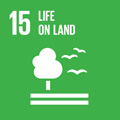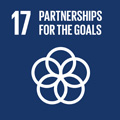- Docente: Donata Luiselli
- Credits: 6
- SSD: BIO/08
- Language: Italian
- Moduli: Donata Luiselli (Modulo 1) Cristina Giuliani (Modulo 2)
- Teaching Mode: Traditional lectures (Modulo 1) Traditional lectures (Modulo 2)
- Campus: Bologna
- Corso: Second cycle degree programme (LM) in Health Biology (cod. 9212)
Learning outcomes
At the end of the course, the student will acquire knowledge to understand origin and spread of Homo sapiens, the coevolution of genes and culture, in particular in relation to the most important changes in the diet that occurred during the evolution of human species. He also learns methods and approaches used to identify, through the analysis of molecular markers, natural selection signatures in loci that played an important role in diet adaptations and their linkage with health status. Finally, the student acquires critical and technical tools useful to understand modern diseases (principles of evolutionary medicine) as well as the main epigenetic mechanisms of adaptation to the environment.
Course contents
Module1
- Molecular anthropology and main topics on the evolution and spread of Homo sapiens.
- Times, places, models, relationships with fossil species (Neanderthal, Denisova).
- Microevolutionary factors and distribution of genomic diversity in human populations.
- Brief history of the human diet. The role of meat, milk and fats. The main demographic and epidemiological transitions: Paleolithic-Neolithic, industrial age.
- The role of natural selection on the human genome; genetic and biocultural adaptation to diet. The conflict between agriculture and ancestral genes.
- Nutrients and brain function
- Microbiota and diet
Module 2
- Relationship between human populations and the environment (exposomi): exposure change during human evolution
- Epigenetic variability in human populations
- Principles of evolutionary medicine, mismatch diseases
- Human biodiversity and obesity
- Human biodiversity and diabetes
- Variability in teste perceptions between human population and health consequences
- Aging and longevity in different human populations, role of genetics, social and cultural factors
Readings/Bibliography
The slides of the lecturers will be provided during the course (Iol platform).
Scientific papers on the course topics will be suggested to integrate slides and notes.Teaching methods
The course consists of lectures divided into two modules of 16 (module 1) and 24 (module 2) hours and 1 laboratory CFU (15 hours).
The lectures provide a close interaction between the teacher and the students and are organized in order to deepen the main issues related to the theoretical part of the two modules, especially in relation to issues concerning the diet starting from the dawn of humanity until today, also in correlation with eating habits and onset pathologies.
The laboratory exercises involve the genotyping of selected loci (e.g. taste genes and lactose tolerance). The methodologies used concern: extraction and quantification of genomic DNA, tests for taste perception, genotyping and data analysis.
Assessment methods
The final exam will attest the acquisition of knowledge and skills through an oral test based on topics covered in the course by the two teachers.
Teaching tools
Slide, PC and Laboratory activities
Office hours
See the website of Donata Luiselli
See the website of Cristina Giuliani
SDGs




This teaching activity contributes to the achievement of the Sustainable Development Goals of the UN 2030 Agenda.
